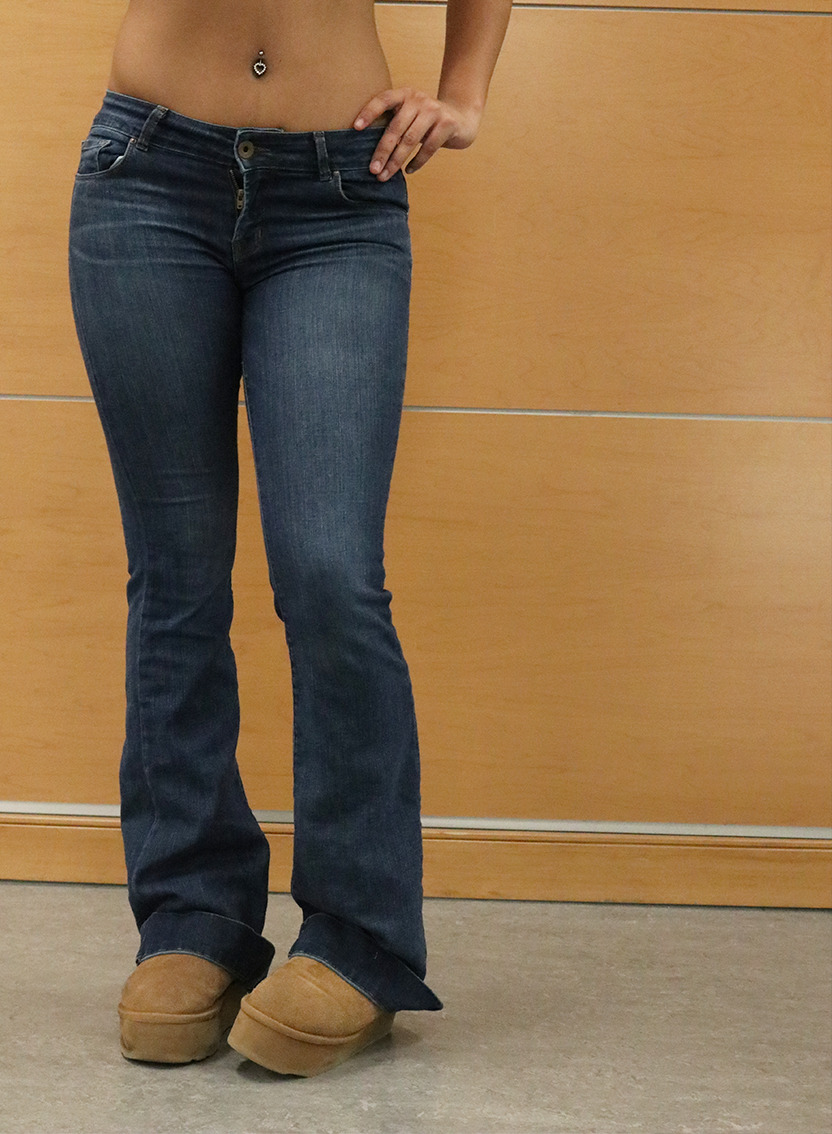Alexander McQueen, a British fashion designer who was the chief designer at Givenchy before founding his own label in 1992, made a significant impact in the 90s by introducing low-rise jeans.
At the time, Kate Moss served as the unofficial ambassador for low-rise jeans because of her influence in the modelling community.
At this point, with low-rise beginning to take off, they were mostly seen on tiny models and famously skinny actresses or singers, like Britney Spears. Spears was an icon for the low-rise movement along with Destiny’s Child and Keira Knightley.
As time went on, the waistlines of jeans rose, and so did concerns about body image and mental health. With eating disorders and body dysmorphia being a threat in our everyday lives, it’s expected that not everyone is running to the stores to buy their own pair.
This time around, though, low-rise jeans may be coming back for all the right reasons.
It’s no longer about fitting your body into clothes, now it’s about finding clothes that fit you. To understand why the trend is on the rise again, it’s important to acknowledge the history behind denim so we don’t have the same unfortunate impacts as before.
Jeans really got fun in the late ’90s and early 2000s. Think flares, bootcut, extra details and bejewelling. The styling was personal, like some people choosing to wear a belt or scarf (as a belt), to really tie in the look.
In the 2000s era being skinny was the fashion trend. Kate Moss was quoted in an interview with Women’s Wear Daily in 2009 saying, “nothing tastes as good as being skinny feels.” With changing times, it’s only natural for her to then in 2018 say she regretted that comment while talking to BBC about the future of modelling.
But this doesn’t change the fact that the fashion industry has been overrun with fatphobia for years. It’s only natural for some people to be worried about this coming back with the “vintage” styles.
In 2004, The Globe and Mail published an article written by Leah McLaren called “Low-rise jeans: slutty and bad for your health.” The article calls low-rise jeans “the single most unwanted fashion trend in decades.”
The argument was that they created a whole new area of insecurity for women. McLaren went on to explain what she called “aspirational dressing.”
“Millions of North American women are tricked into thinking that dressing like Giselle will make them four inches taller and 20 pounds thinner,” she wrote.
While in the past it’s been normal for women to feel as if they aren’t skinny enough, pretty enough or good enough, body positivity is now getting into the lives of more people, too.
Young people seem to be on board. When a first year Durham College student was asked about the trend returning, they said low-rise pants “make me feel confident in my body.”
Women fought for the right to wear pants, so let them decide what they look like. A trend doesn’t mean mandatory, so if you don’t like low-rise, no one is confiscating your high-rise jeans.
What’s great about recycling old fashion trends is that people can pick and choose what they want to bring back. You can have low-rise without fatphobia, like you can have leg warmers without them being neon.
This is all about reclaiming fashion for all the years people felt suppressed and lesser than because their body didn’t fit the trends. Bodies aren’t trends, so don’t try to fit into what everyone else is doing.
Low-rise styles are for everyone, the curvy, skinny, short and tall. What’s important is to wear whatever you feel confident in. If you want to rock a pair of dark wash low-rise jeans and a baby tee, true to Y2K fashion, then you rock that outfit.




